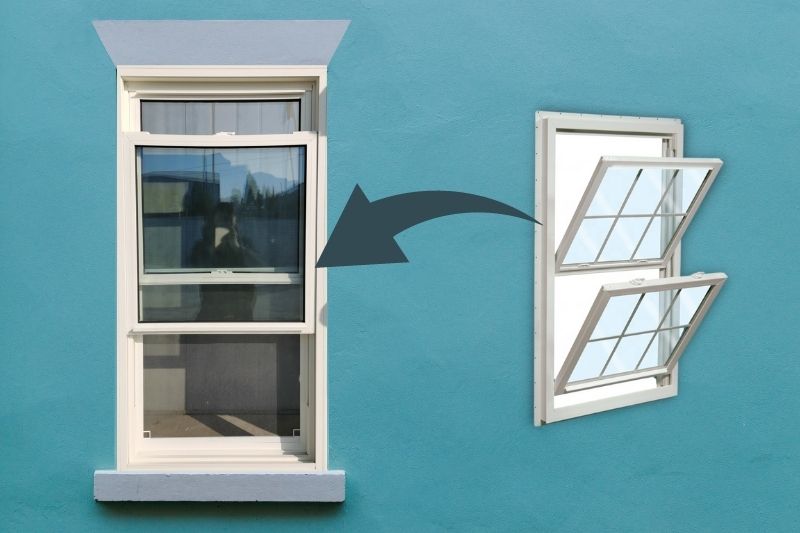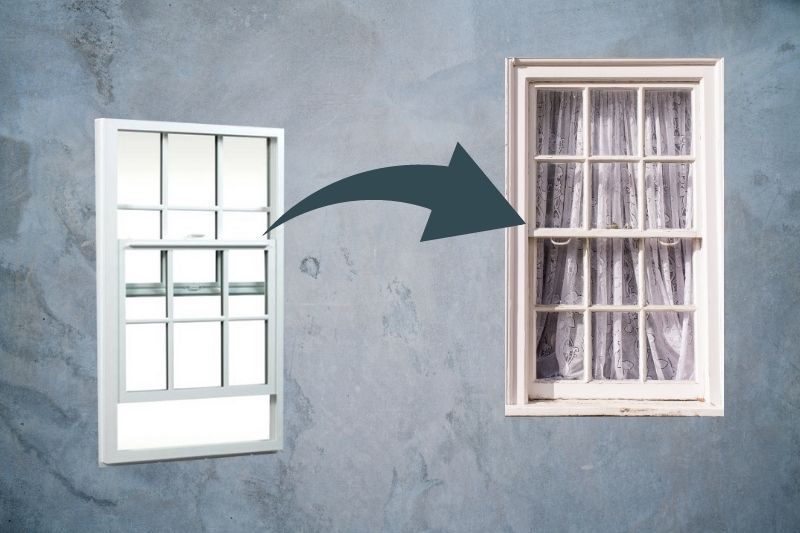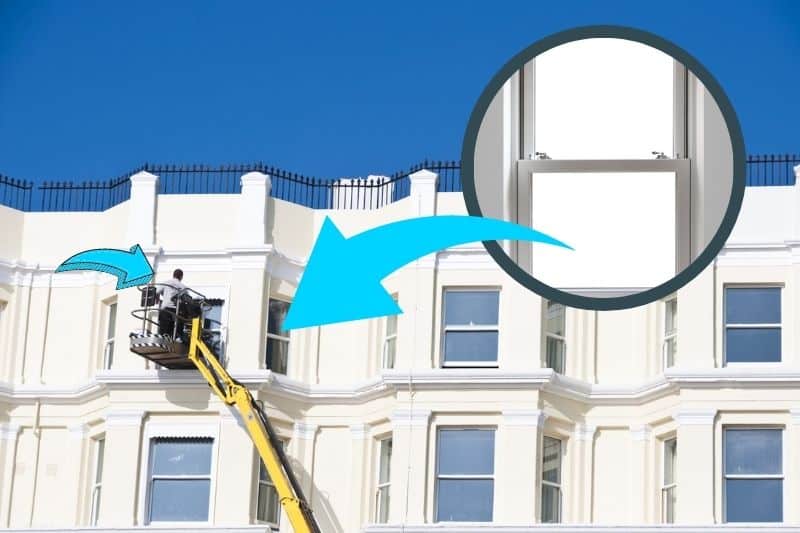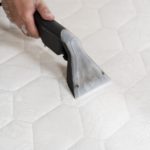Sash windows may have been a favoured architectural element for years, but some homeowners do find that they can be tricky to clean and maintain.
Despite this, keeping up the maintenance of sash windows is crucial to keep them protected from the elements and looking their best for years to come.
Types of Sash Windows
Whilst some people assume that all sash windows are the same, this is certainly not the case.
The exact type of sash window you have will have an effect on how you go about cleaning them, so take the time to determine the type you have and how the windows move before getting started.
Single-hung sash windows
Many sash windows are only single hung, which means that only one section of the window moves.
The exact age and style of your windows will determine their opening mechanism, for example, some sash windows may have clips in the jamb that need pulling out, and others may have hinged sashes that make for easy cleaning.
Double-hung sash windows
Double-hung sash windows are style of window in which both the upper and lower sashes slide open. If this is the type that you have, you can lower the top sash and lift the lower one to reach into those tricky areas, and then reverse to reach the other areas.
Some double-hung sash windows are also hinged, which can make cleaning both sides of the window from the inside easier.
It is worth remembering however that some homes may find that the top sash on this style of window has been painted shut over the years, and therefore it does not move.
Safety First

When it comes to cleaning windows, especially windows that are not on ground level, make sure to always put your safety first.
If the window is higher than your equipment can safely reach or you do not have any suitable equipment at all, consider hiring professionals instead of trying to tackle the task yourself.
Cleaning Double-Hung Sash Windows
Double-hung sash windows are a timeless feature of many homes, and whilst they do require a lot more upkeep than alternatives, they can be cleaned relatively easily.
You will need:
- A brush or vacuum
- Glass cleaner and a microfibre cloth for the inside
- A soft cloth/sponge and soapy water for the outside

Step 1
Remove any dirt that has built up around the frame of the window with either a brush or a vacuum.
Step 2
Pull both sashes down fully and clean the top half of the outer sash
Step 3
Position the inner sash halfway up, and clean the top half
Step 4
Push both sashes fully upwards, and clean the lower half of the outer sash
Step 5
Position the inner sash halfway down to clean the bottom half
Step 6
Use a soapy cloth to clean the frames, but make sure they are dried afterwards to remove any excess water
Cleaning Single-Hung Sash Windows
When it comes to cleaning single-hung sash windows, the process is very similar to the method above for double-hung windows.
You will need:
- A brush or vacuum
- Glass cleaner and a micro-fibre cloth for the inside
- A soft cloth/sponge and soapy water for the outside

Step 1
Remove any dirt that has built up around the frame and ledge with a brush or vacuum
Step 2
Clean the interior glass with glass cleaner and a micro-fibre cloth
Step 3
Unlock the sliding sash and slide it along around halfway until you can lift the sash into the frame. After raising the sash into the frame, you will be able to swing it out towards you.
Please note – this step will vary depending on the manufacturer and style of your window.
Step 4
Lay the sash on a sturdy surface with the exterior side facing upwards and wipe the glass surfaces down. At the same time, clean the rollers and edges of the sash to ensure they are free from debris.
Step 5
After removing the sash, you can clean the exterior of the fixed glass. On smaller windows, you may be able to do this safely from the inside. On larger windows, you may need a suitable ladder to do this safely.
Step 6
Replace the sash by lifting it back into the frame and rotating it back into place.
Note: these same steps may apply if you have double-hung sash windows with one sash painted shut.
Top Tips
If you are cleaning your windows yourself, take the time during the process to check over the frames and glass for any common issues, such as rotting wood or fraying cords.
If your windows do have any of these issues, you will save yourself money in the long run by getting them addressed as quickly as possible.
You should avoid cleaning windows on very sunny days. Direct sunlight will dry the soapy water or glass cleaner much quicker, which can lead to streaking. Instead, try to clean your windows early in the morning or on a cloudy day.
Never use abrasive materials, solvent-based chemicals, or hard cleaners such as spirts or bleach to clean the windows. These can all damage either the glass itself or the wooden frame.

Lover of coffee, painting, and all things cute and fluffy. I’m always on the lookout for easier, more gentle ways to tackle awful household chores.






